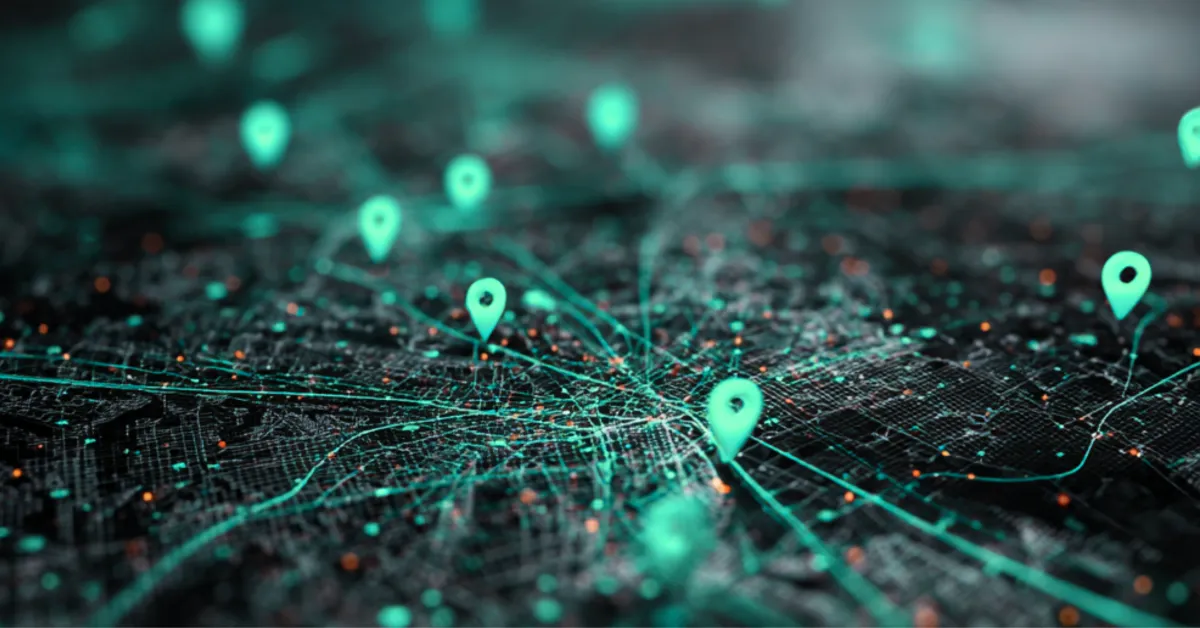
Precision Agriculture and Mining Geospatial Intelligence: Advanced Mapping Services for Resource Industries
Executive Summary
The resource extraction and agricultural sectors are experiencing revolutionary changes through the implementation of advanced geospatial intelligence and mapping data services. Precision agriculture and mining operations are leveraging sophisticated mapping technologies, artificial intelligence, and real-time data analytics to optimise resource utilisation, enhance productivity, and ensure sustainable operations. With the global geospatial analytics market projected to reach significant growth, resource industries are increasingly adopting these technologies to maintain competitive advantage while addressing environmental and operational challenges.
Precision Agriculture: Mapping the Future of Food Production
The Evolution of Agricultural Mapping Services
Precision agriculture represents a paradigm shift from traditional farming methods to data-driven, spatially-aware agricultural practices. Precision maps utilise geo-referenced data to provide farmers with specific information about precise locations within their fields, including crop moisture levels, soil nutrient content, and yield potential. This technology enables farmers to make educated decisions about fertiliser application, pesticide usage, and irrigation management, ultimately improving both productivity and environmental sustainability.
Modern precision mapping systems integrate multiple data sources including satellite imagery, drone-based sensors, GPS tracking, and ground-based monitoring devices. These systems analyse variables such as crop health, soil moisture, yield patterns, and weather conditions to create comprehensive spatial intelligence platforms that guide agricultural decision-making.
Advanced Sensor Integration and Data Collection
The foundation of precision agriculture lies in sophisticated sensor networks that capture real-time data across agricultural operations. Drone-based LiDAR systems, mobile laser scanners, and high-resolution cameras work together to create detailed maps of field conditions. These sensors can detect subtle variations in crop health, soil composition, and topographical features that would be impossible to identify through traditional observation methods.
The integration of IoT devices with agricultural mapping services enables continuous monitoring of environmental conditions, soil moisture levels, and crop development stages. This real-time data collection allows farmers to respond quickly to changing conditions and optimise their management practices accordingly.
Economic and Environmental Benefits
The implementation of precision agriculture mapping services delivers significant economic and environmental benefits. By enabling targeted application of fertilisers and pesticides, farmers can reduce input costs while minimising environmental impact. Studies have shown that precision agriculture can reduce chemical usage by up to 30% while maintaining or improving crop yields.
The ability to optimise irrigation based on precise soil moisture mapping can reduce water consumption by 20-40%, addressing critical water scarcity challenges in many agricultural regions. Additionally, precision mapping enables better crop rotation planning and soil health management, contributing to long-term agricultural sustainability.
Mining Industry: Geospatial Intelligence for Resource Extraction
Digital Transformation in Mining Operations
The mining industry is undergoing significant digital transformation through the integration of geospatial intelligence and advanced mapping technologies. Modern mining operations utilise satellite imagery, drone surveys, and ground-based sensors to create comprehensive spatial intelligence platforms that support exploration, extraction, and environmental management activities.
Mining 4.0 represents the evolution of traditional mining practices toward intelligent, connected operations that leverage big data analytics, artificial intelligence, and real-time monitoring systems. Geospatial intelligence serves as the foundation for these advanced mining operations, providing the spatial context necessary for optimising extraction processes and ensuring operational safety.
Exploration and Resource Assessment
Geospatial intelligence plays a crucial role in mining exploration by enabling companies to identify promising mineral deposits through advanced analysis of satellite and aerial imagery. Spectral analysis of remote sensing data can reveal geological formations and mineral signatures that indicate potential resource locations, significantly reducing the time and cost associated with traditional exploration methods.
Advanced mapping services integrate multiple data sources including geological surveys, geophysical measurements, and geochemical analysis to create comprehensive resource assessment models. These models enable mining companies to make informed decisions about where to focus their exploration efforts and how to optimise extraction strategies.
Operational Optimisation and Safety Enhancement
Real-time mapping services enable mining operations to optimise equipment deployment, monitor worker safety, and track environmental conditions. Digital twin technology creates virtual replicas of mining facilities that can be used to simulate different operational scenarios and identify potential safety hazards before they occur.
Geospatial analytics help mining companies optimise haul road layouts, equipment positioning, and material flow patterns to maximise operational efficiency. This spatial approach to operations management can reduce fuel consumption, minimise equipment wear, and improve overall productivity.
Environmental Monitoring and Compliance
Mining operations face increasing pressure to minimise environmental impact and comply with strict regulatory requirements. Geospatial intelligence provides mining companies with powerful tools for environmental monitoring, enabling real-time tracking of air quality, water contamination, and habitat disruption.
Satellite-based monitoring systems can detect environmental changes across large areas, providing early warning of potential environmental issues. This capability enables mining companies to implement corrective measures quickly and demonstrate compliance with environmental regulations.
Oil and Gas Industry: Specialised Mapping Services
Offshore Operations and Infrastructure Mapping
The oil and gas industry relies heavily on specialised mapping services to support offshore exploration and production activities. Companies like Infield Systems provide comprehensive GIS and mapping services specifically designed for the offshore oil and gas industry, presenting up-to-date visual representations of licence blocks, concession information, and production infrastructure.
These mapping services include detailed information about fixed and floating platforms, pipelines, single point moorings, wells, terminals, ports, and heliports across different geographic regions. This comprehensive spatial intelligence enables oil and gas companies to make informed decisions about exploration opportunities, infrastructure development, and operational planning.
Risk Assessment and Emergency Response
Geospatial intelligence provides oil and gas companies with critical capabilities for risk assessment and emergency response planning. By analysing spatial relationships between infrastructure, environmental sensitive areas, and population centres, companies can develop comprehensive risk management strategies and emergency response plans.
Real-time monitoring systems can detect pipeline leaks, equipment failures, and environmental incidents, enabling rapid response to minimise impact. This capability is particularly important for offshore operations where environmental risks can have far-reaching consequences.
Advanced Technologies and Future Trends
Digital Twin Integration
The integration of digital twin technology with mapping data services is creating new opportunities for resource industry optimisation. Digital twins provide virtual representations of physical assets that can be used for simulation, optimisation, and predictive maintenance.
In agriculture, digital twins can simulate crop growth under different management scenarios, helping farmers optimise their practices for maximum yield and sustainability. In mining, digital twins enable virtual testing of extraction strategies and equipment configurations before implementation in physical operations.
Edge Computing and Real-Time Processing
The implementation of edge computing architecture in resource industries enables real-time processing of geospatial data at remote locations. This capability is particularly valuable for operations in remote areas where internet connectivity may be limited or unreliable.
Edge computing systems can process sensor data locally, providing immediate insights and alerts without relying on cloud connectivity. This approach reduces latency and enables more responsive decision-making in time-critical situations.
Challenges and Implementation Considerations
Data Quality and Integration
One of the primary challenges in implementing advanced mapping services is ensuring data quality and seamless integration with existing systems. Resource industries must carefully manage data from multiple sources, ensuring accuracy and consistency across different platforms and applications.
The integration of legacy systems with modern mapping technologies requires careful planning and significant investment in infrastructure upgrades. Companies must balance the benefits of advanced mapping services with the costs and complexity of implementation.
Regulatory Compliance and Environmental Considerations
Resource industries face increasing regulatory scrutiny regarding environmental impact and sustainability practices. Mapping data services must be designed to support compliance with environmental regulations while enabling operational optimisation.
Companies must ensure that their mapping and monitoring systems provide accurate, verifiable data that can be used to demonstrate compliance with regulatory requirements. This capability is particularly important for industries operating in environmentally sensitive areas.
Economic Impact and Market Opportunities
Market Growth and Investment Trends
The adoption of advanced mapping services in resource industries is driving significant market growth and investment opportunities. The global geospatial analytics market is experiencing rapid expansion, with particular growth in applications related to agriculture, mining, and energy sectors.
Investment in precision agriculture technologies is expected to continue growing as farmers seek to optimise productivity while reducing environmental impact. Similarly, mining companies are investing heavily in digital transformation initiatives that leverage geospatial intelligence for operational optimisation.
Return on Investment
Resource companies implementing advanced mapping services are seeing significant returns on investment through improved operational efficiency, reduced environmental impact, and enhanced regulatory compliance. These benefits are driving continued adoption of geospatial technologies across the resource sector.
The ability to optimise resource utilisation, reduce waste, and improve safety through spatial intelligence provides compelling business cases for investment in advanced mapping services. Companies that successfully implement these technologies gain competitive advantages in increasingly challenging market conditions.
Conclusion
Precision agriculture and mining geospatial intelligence represent the future of resource industry operations, providing unprecedented capabilities for optimisation, sustainability, and efficiency. As these technologies continue to evolve, resource companies that embrace advanced mapping services will be better positioned to address the challenges of feeding a growing global population while responsibly managing natural resources.
The integration of artificial intelligence, real-time data processing, and digital twin technology with geospatial intelligence is creating new opportunities for innovation and optimisation across resource industries. Companies that successfully implement these technologies will lead the transformation toward more sustainable, efficient, and profitable operations.
The future of resource industries lies in the intelligent application of spatial intelligence to optimise operations while minimising environmental impact. Advanced mapping data services provide the foundation for this transformation, enabling resource companies to operate more efficiently, safely, and sustainably in an increasingly complex global environment.
